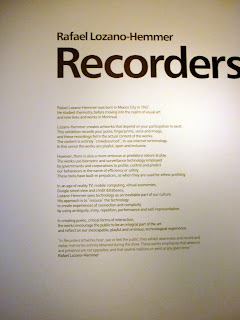 Richard Hamilton, typographical represention of Marcel Duchamp's 'The Green Box"
Richard Hamilton, typographical represention of Marcel Duchamp's 'The Green Box"

'The Cabinet of Curiosity'
 Richard Hamilton, typographical represention of Marcel Duchamp's 'The Green Box"
Richard Hamilton, typographical represention of Marcel Duchamp's 'The Green Box"







 I first came across Barney Bubbles when Hitch (my tutor) imparted some of his creative influences to us in a lecture, therefore I was really looking forward to hear a lecture from the author of the book, 'Barney Bubbles: Reasons To be Cheerful,' Paul Gorman.
I first came across Barney Bubbles when Hitch (my tutor) imparted some of his creative influences to us in a lecture, therefore I was really looking forward to hear a lecture from the author of the book, 'Barney Bubbles: Reasons To be Cheerful,' Paul Gorman.
 Teal Triggs came to talk to us about her recently released book entitled 'fanzines.' I thought that her research on the subject was of course impressive and she had covered an extensive range of zines from all over the world. I expected Triggs to gives us a little more of an insight into zine culture, rather than talk us through the titles of a long list of zines and for this reason I found the lecture less interesting. I do engage with zines and having an avid interest in photo-montage come hand in hand with zine culture with artist such as Linder Sterling and I have made some myself in the past, they are a great way of collating together information and some of the better ones are great for making political and social statements. I think if Triggs had spoken more extensively about the sub-culture of zines this would have been more interesting, but instead I found the talk quite tedious towards the end.
Teal Triggs came to talk to us about her recently released book entitled 'fanzines.' I thought that her research on the subject was of course impressive and she had covered an extensive range of zines from all over the world. I expected Triggs to gives us a little more of an insight into zine culture, rather than talk us through the titles of a long list of zines and for this reason I found the lecture less interesting. I do engage with zines and having an avid interest in photo-montage come hand in hand with zine culture with artist such as Linder Sterling and I have made some myself in the past, they are a great way of collating together information and some of the better ones are great for making political and social statements. I think if Triggs had spoken more extensively about the sub-culture of zines this would have been more interesting, but instead I found the talk quite tedious towards the end.
















I was set the brief to Re-Brand Gpd by TDR's Creative Director, Ian Anderson.
Aim:
To refresh the brand 'God' in an attempt to restore peoples existing interest in God, however small/large this may be.
Reasons why people have lost interest in God:
Mundane
Old Fashioned
Inconvenient
Traditional
Obligation
Reasons people like God:
Friendship
community
reassurance
advice
Target audience:
People who already believe in God, but perhaps don't actively worship or participate in religion because of their lifestyle and/or negative connotations of religion
Strategy:
-I thought about other ‘more fashionable’ religions i.e Kabballah, and researched what resources can be used to their full potential to spread the word of God. I asked myself how could 'God' fit into the lifestyles of people too busy to worship or go to church. I came up with the idea of a Halo band, which would allow people to feel a sense of belonging, similar to the red Kabballah bands, or festivals bands: a statement of their religion .
The device is fitted with bluetooth and similar to an oyster card the band can be touched onto terminals to enable to wearer to download sermons from their local church, or national/global sermons.
Sermons can be listened to directly form the device or the band can link to iPhone, iPad, laptop, PC, Mac etc so that the user can listen in their free time and also keep a backlog of sermons as they would with downloaded music.
Would this destroy the ‘sense of community' that religion offers?
The band can also be used to share information between people, by touching wrists, the touching of wrists gives off more positive connotations of ‘me and God are mates’ rather than the previous negative connotations of praying i.e subservient. The band would promote a sense of religious community not just ‘in the church’ but all the time between people who meet and interact with each other in day to day life.
If this was a campaign in real life, the most popular and widely distributed brand to carry it out would be apple- therefore I came up with the concept, iGod



 Designers and restaurants. Something I have been pondering in my consideration of the ISTD brief: Muttod Quad, my task? To design a typographic restaurant. I am undecided as to whether this brief is a branding venture, an interior design challenge, research into 'Alphabetti Spaghetti' or a way to use a specific topic, in this case, Gastronomy and explore it typographically.
Designers and restaurants. Something I have been pondering in my consideration of the ISTD brief: Muttod Quad, my task? To design a typographic restaurant. I am undecided as to whether this brief is a branding venture, an interior design challenge, research into 'Alphabetti Spaghetti' or a way to use a specific topic, in this case, Gastronomy and explore it typographically. This wallpaper called Pocket Wall by designer Maja Ganszyniec is like a wrapping paper. The project turns the purely decorative layer of wallpaper into storage. (Link)
This wallpaper called Pocket Wall by designer Maja Ganszyniec is like a wrapping paper. The project turns the purely decorative layer of wallpaper into storage. (Link)
 See more creative wallpapers here
See more creative wallpapers here